No number of additional galaxies can prevent the Universe from needing dark matter

From “billions and billions” to more than two trillion, we still need dark matter as much as ever!
“In order for the light to shine so brightly, the darkness must be present.”
–Francis Bacon
It was perhaps the biggest news in space since we detected gravitational waves: instead of “billions and billions” of galaxies, there are at least two trillion of them — that’s 2,000,000,000,000 — within our observable Universe. Previously, the best estimate was merely 170 billion, coming from galaxy counts informed by the deepest observations of the Hubble Space Telescope. You might wonder, with more than 10 times the galaxies present than we’d previously thought, whether this means that dark matter might not be necessary after all. Let’s see what the science has to say.
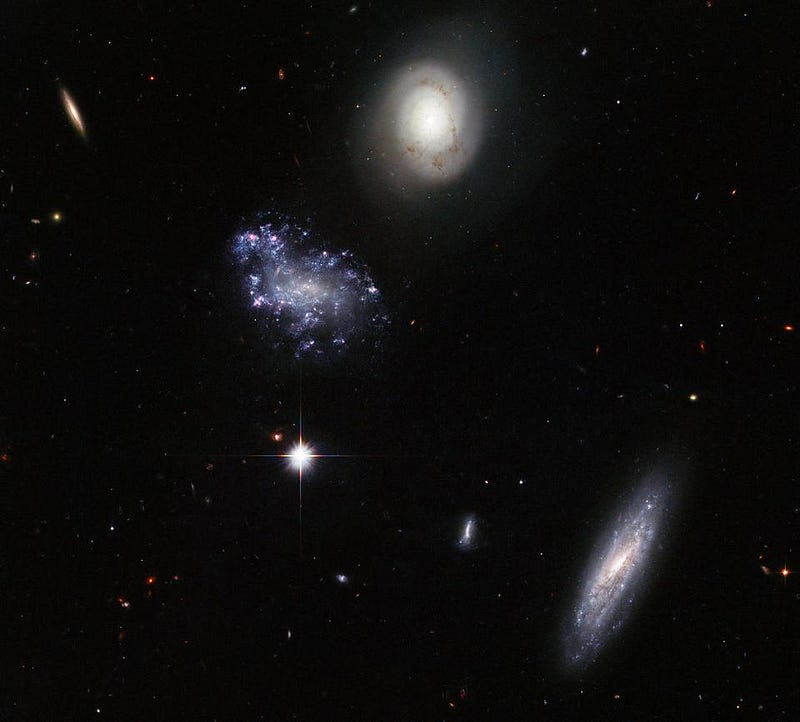
If you take a look at stars, galaxies or clusters of galaxies in the nearby Universe, you can gather all the light available over the full set of wavelengths covering the electromagnetic spectrum. Because astronomers think we know how stars work, by measuring all of that light, we can calculate how much mass is present in the form of stars. This is one form of normal matter: matter made up of protons, neutrons and electrons. But stars aren’t all of it; there are plenty of other sources as well, like gas, dust, plasma, planets and black holes.
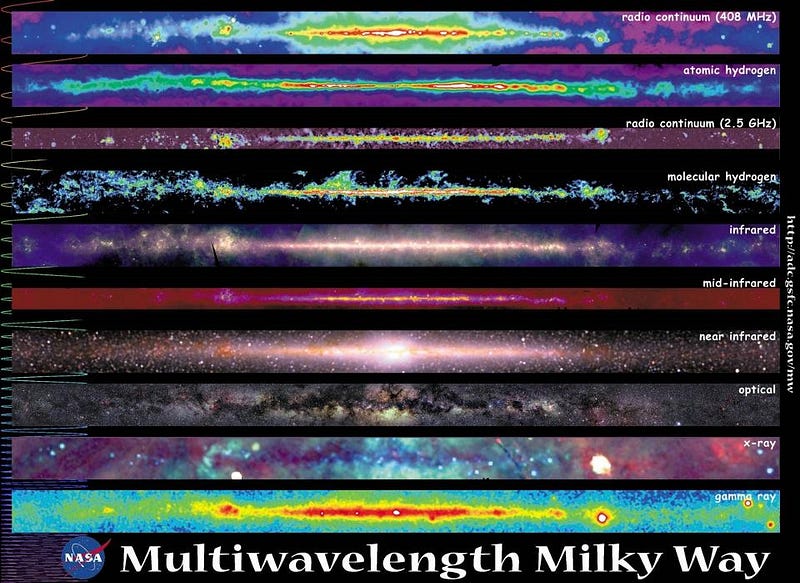
Each of them leave their own signature and each has its own methods to constrain or detect its presence and abundance. You might think that adding all of these different components together is how we get an estimate for the amount of matter in the Universe, but that’s actually a horrible approach, and not how we do it at all. Instead, there are three separate, independent signatures that measure the total normal matter content of the Universe all at once.
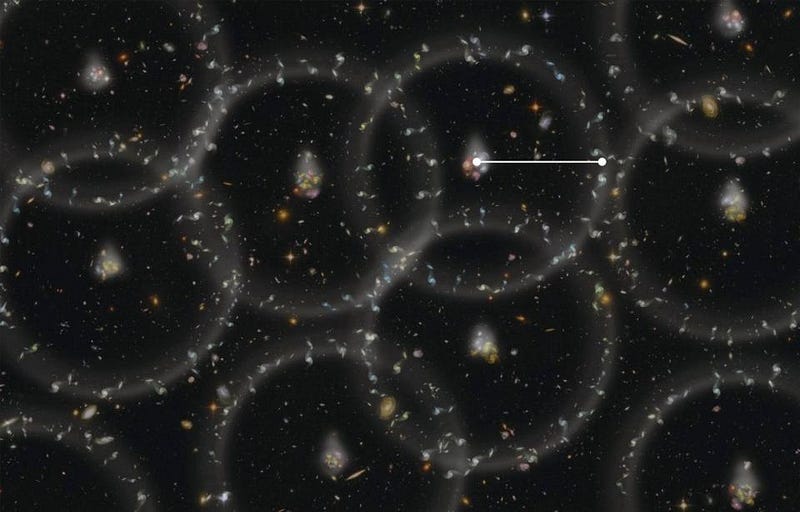
One is to look at the clustering data of all the different galaxies we observe. If you put your finger on one galaxy and ask, “how likely am I to find a galaxy at a particular distance away,” you’ll find a nice, smooth distribution as you increase that distance. But thanks to normal matter, there’s an increased likelihood of finding a galaxy that’s 500 million light years away versus finding one that’s either 400 or 600 million light years. The amount of normal matter present determines this distance, and thanks to this technique, we get a very particular number for the amount of normal matter: about 5% of the critical density.
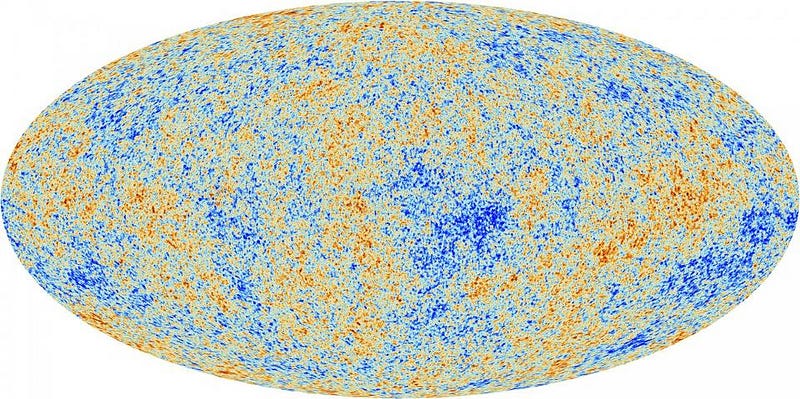
A second is to look at the fluctuations in the cosmic microwave background. The Big Bang’s leftover glow is one of the best signals we have from the young Universe to piece together what it was like in the distant past. While this map of the slightly hotter and cooler spots might look like random fluctuations to the naked eye, the fluctuations are larger than average on a very specific scale — about 0.5º — that corresponds to a very particular density of normal matter in the Universe. That density? About 5% of the critical density, the same as from the first method.
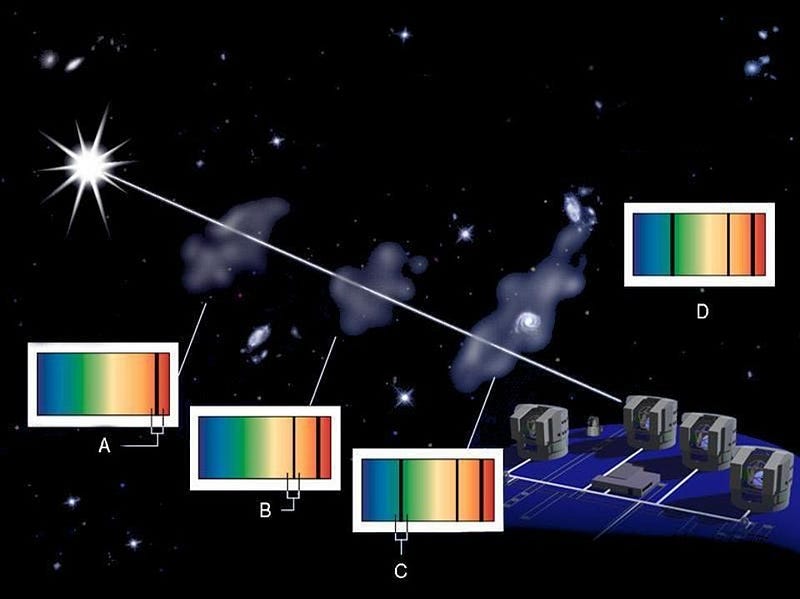
And finally, you can look at the earliest matter you can observe: pristine clouds of gas that have never formed a single star. Stars don’t form everywhere in the Universe at once, so if you can find an ultra-bright galaxy or a quasar that emits light from when the Universe was less than one billion years old, you might get lucky enough to find an intervening cloud of gas that absorbs some of that light. Those absorption features tell you what elements are present and in what abundance, and that in turn tells you how much normal matter must be present in the Universe to form those ratios of elements like hydrogen, deuterium, helium-3, helium-4 and lithium-7. The result from all this data? A Universe with about 5% of the critical density in the form of normal matter.
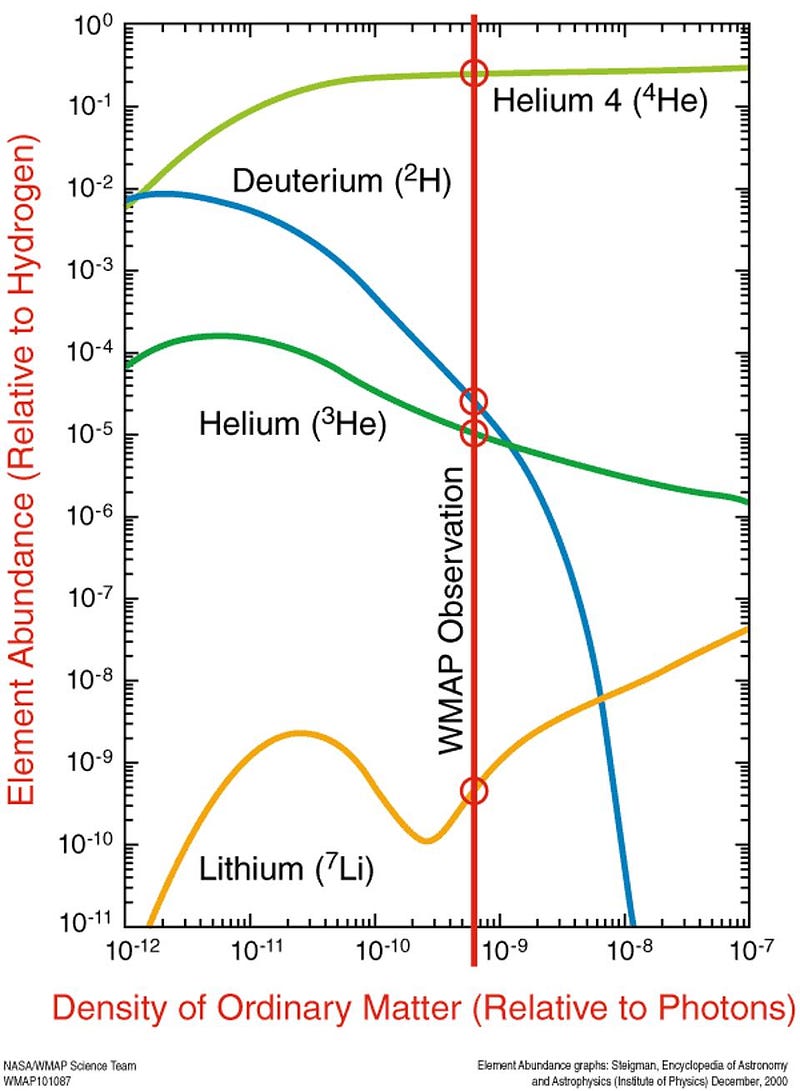
The fact that these three wildly independent methods all give the same answer for the density of normal matter is a particularly compelling argument that we know how much normal matter is in the Universe. When you hear a story about more stars, galaxies, gas or plasma being found in the Universe, that’s good, because it helps us understand where that 5% is located and how it’s distributed. More stars might mean less gas; more plasma might mean less dust; more planets and brown dwarfs might mean fewer black holes. But it can’t encroach on the other 27% that dark matter makes up, or the other 68% that dark energy composes.
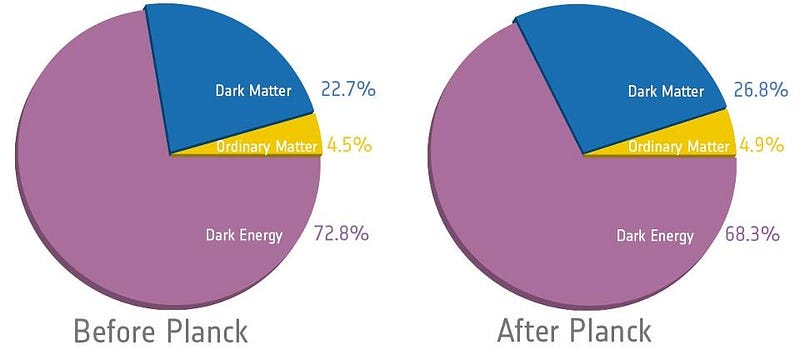
Those same sources of data that tell us the normal matter density — plus many others — can all be combined to paint a single cohesive picture of the Universe: 68% dark energy, 27% dark matter and 5% normal matter, with no more than 0.1% of anything else like neutrinos, photons or gravitational waves. It’s important to remember that the “5% normal matter” doesn’t just include stars or other light-emitting forms of matter, but rather everything that’s composed of protons, neutrons and electrons in the entire Universe. More stars, more galaxies or more sources of light might be a remarkably interesting discovery, but it doesn’t mean that we don’t need dark matter. In fact, to obtain the Universe as we observe it to be, dark matter is an indispensable ingredient.
The discovery that there are more galaxies than we’d ever known before better informs us how the matter we have is distributed, but does nothing to change what the matter itself fundamentally is. We’re still on the hunt for exactly what the nature of dark matter and dark energy are, to be sure. From a cosmic perspective, not only don’t these new observations change our picture of what’s out there, but in order for dark matter and dark energy to be wrong, something would have to be off about what we’ve already seen. Nevertheless, we have no choice but to keep looking. The mysteries of nature might not yield easily, but neither does human curiosity.
This post first appeared at Forbes, and is brought to you ad-free by our Patreon supporters. Comment on our forum, & buy our first book: Beyond The Galaxy!





